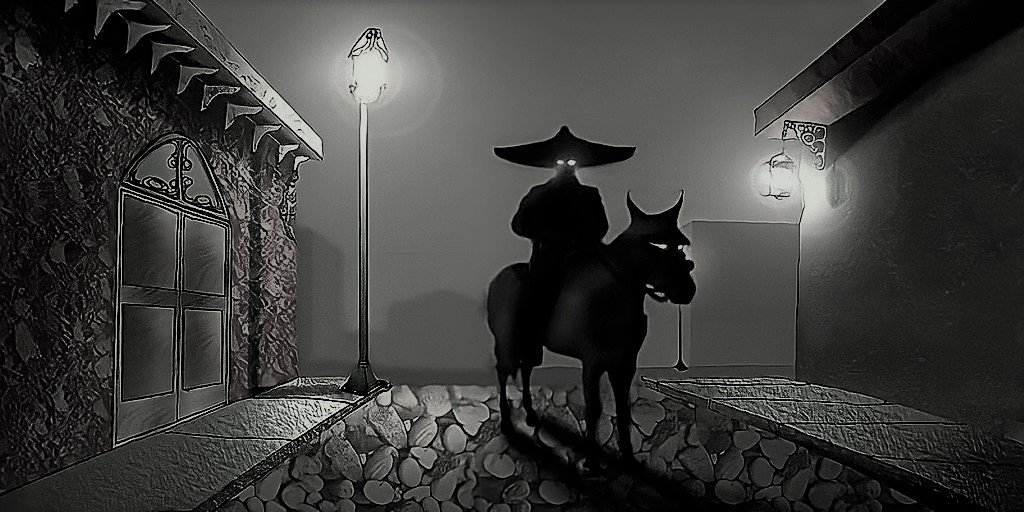Mary Bateman: The Serial Killing Yorkshire Witch
This will make sense towards the end of this article
We’ve briefly covered witches in another article, specifically how King James of England hated them so much that he wrote a book on how to hunt them, but that was back in the 1600s, people and countries change.
The Witchcraft Act of 1735 made witch hunting a less common thing and decriminalized witchcraft. Sure some people still went on witch hunts here and there but usually for those that worshipped Satan.
The Witchcraft Act made it possible for people to start telling fortunes and selling charms without worry. As more and more people accepted these fortune-tellers, they accepted the ‘visions of the future’ they were told and this made it a pretty big deal when one witch predicted the end of the world.
Today we’re going to look at the life of Mary Bateman, a serial killing witch who also predicted the end of the world which doesn’t seem to have been accurate.
The Witches
It’s the year 1802 and things are looking up for Mary Bateman. She had just reached her 10th year wedding anniversary with her husband John Bateman who was serving in the military. She was an independent woman in the city of Leeds, working as a seamstress, and also had people lined up at her home asking for advice.
Why were they asking her for advice? Well because they technically weren’t asking for her advice. Mary worked for Mrs. Moore, a reclusive sort of white witch. Mrs. Moore was the seventh child of a seventh child, which imbued her with a type of luck, or magic, that she could then focus on a client.
But if you just wanted your average psychic or your fortune told, Mary luckily was also working for a Miss Blythe. Like Mrs. Moore, Miss Blythe was also a recluse and entrusted Mary to be the go-between her and the clients.
It was a win-win for everyone, clients came to see either Mrs. Moore or Miss Blythe, they would meet with Mary explain their problems or questions, give Mary payments and she would then go to the respective magic users. The clients returned the following day and Mary told them what Mrs. Moore or Miss Blythe had said along with giving them a potion or charm.
At that point in her life, Mary probably thought nothing could ever go wrong… but it was about to all go wrong.
The First Victims
In 1803 Mary became friends with three sisters who were owners of a drapery shop and also clients of Miss Blythe. Since Mary was a seamstress she also began helping them on and off in their shop. One day, one of the sisters became ill and with medicine from Miss Blythe, Mary tried to nurse her back to health.
Soon, all three sisters were dead from the same mystery illness. According to Mary, they died of the black plague. Some of you may be thinking “the black plague? Of all things, in all of the places? In the 1800's England? Seems a bit fishy.”
On top of that, all of the money and accounts for the shop and home were now empty, gone, or nowhere to be found. No one really questioned it back then, either from fear of getting too close to the bodies that might be infected with the plague or from fear of Miss Blythe and her magical prowess.
“Hmm our main suspect says it was the plague… that checks out. Break time!”
Now I’m assuming many of you have put the pieces together and are justly pointing the finger at Mary and Miss Blythe but in a slight twist, Miss Blythe wasn’t a part of it at all. In fact, Miss Blythe and Mrs. Moore, never existed.
Mary Harker
Let’s go back to 1780 in North Yorkshire, England, 12-year-old Mary Harker was developing a penchant for stealing, so much so that everyone kept a close eye on her as they knew of her schemes and tricks. If Mary wanted to keep hustling people out of their money and items she would have to move, and that’s exactly what she did in the late 1780s to the city of Leeds.
Here is where Mary developed much of her later tricks, she began working as a seamstress and making a few extra dollars as a witch, telling fortunes, making potions, and creating charms. The problem was she couldn’t stop herself from stealing or making outlandish claims that made people feel cheated. She started moving around to avoid a bad reputation.
By 1792 she met and married John Bateman who by all accounts was an honest man but turned a blind eye to the cons his wife was now playing. He was also supportive enough to move around Leeds whenever the heat got a little too much Mary Bateman.
But eventually, everyone has a breaking point, maybe it was after they had children and Mary was still conning people and getting arrested? I don’t know, but John Bateman joined the militia to escape his wife.
This meant Mary had to support her four children on her own. With some people knowing she was a fraud, she created Mrs. Moore and Miss Blythe. You can’t blame Mary Bateman if Mrs. Moore and Miss Blythe turn out to be wrong about their predictions right?
No one is really sure why Mary Bateman ended up escalating to murder except for needing more money. And we’re not really sure why no one suspected her when the three sisters, who owned the drapery shop, ended up dead but this only emboldened Mary.
Prophet Hen of Leeds
By now she had built a better reputation, people weren’t aware Miss Blythe and Mrs. Moore were fabrications. They believed Mary was learning from them and becoming skilled in witchcraft herself. So it’s no wonder when Mary one day in 1806 announced she had a chicken that predicted the end of the world, people freaked out.
She spread the story of the “Prophet Hen of Leeds” and people came flocking to the area to watch the hen. According to Mary, the hen was laying eggs telling of the coming of Christ. Believers and non-believers came from all around to see it lay an egg and when it did, everyone was shocked.
Right there on the egg, it said “Christ was coming”. Christ was actually misspelled as Crist but you can’t blame the chicken for not knowing how to spell.
But you could blame Mary because, as you may have guessed, this was just another scheme. Eggshells are made of calcium carbonate and if you apply an acid, like vinegar, onto it in the shape of the words “Crist is coming”, the vinegar reacts to the calcium and starts breaking it down without breaking through the membrane of the egg.
And this is exactly what Mary did before shoving the egg back into the poor chicken so it would appear as if it was freshly laid. She would then charge people money to see the chicken and even charged people tickets into heaven for when Crist actually came.
“Hold on, you’re putting that egg where?!”
Eventually, someone witnessed her doing it so that was the end of the scheme. She wasn’t charged with any crimes though, I’m guessing since no one was physically injured the police looked at it as “no harm, no fowl.”
Although I do think the chicken would have something to say about that.
The Perigo’s
Mary sold the chicken to people who still believed in the “Prophet Hen of Leeds” and made a pretty penny out of it. Now she needed a new scheme and that’s where her new targets came in, William and Rebecca Perigo. They had heard of Mary’s magical ability and her connection to Miss Blythe so they sought her out to help cure Rebecca’s nervous disorder, thought to have been caused by a curse.
Obviously, Mary jumped at the opportunity. Soon they were paying her all the money they had to help rectify the ‘curse’. Miss Blythe would tell the Perigos to purchase all sorts of things for Mary, including a bed and they complied every time.
“Buying this set for me will save your life… I guarantee it!”
Eventually, Miss Blythe sent a dire message to the Perigos through Mary, in the next month they would get violently ill. But luckily Mary had been given a cure for them, a special pudding that was given to them in a honey pot, and a specific powder they had to sprinkle onto it. They were instructed to not let anyone else eat any of it.
It was poison.
Unfortunately, the Perigos never suspected anything and in May of 1807 Rebecca Perigo died but William ended up living. Unbelievably he still didn’t suspect any wrongdoing and for another year would keep paying Mary for more potions and charms, even giving her Rebecca’s clothes as payment.
The Yorkshire Witch Goes to Trial
It wasn’t until October of 1808 that he finally suspected something and incredibly Mary tried to pin the poisoning on him but she was arrested and tried for the murder of Rebecca Perigo.
In Mary’s home, they found evidence of the powder which turned out to be arsenic, all of the payments that supposedly went to Miss Blythe, letters that supposedly came from Miss Blythe were found to match Mary’s handwriting, and finally the contents of the honey pot were found to contain mercury.
Mary was found guilty and sentenced to death by hanging but our story doesn’t end there. Mary attempted to avoid execution by stating she was pregnant but that was determined to be a lie after several women were tasked with checking her.
Mary denied any wrongdoing until the moment of her death on March 20th, 1809. By then she was known as the Yorkshire Witch and many still believed she had some sort of magical ability. Here’s where things get stranger, after her death, her skin was stripped off her body and used for book bindings and charms. So you know, history is crazy.
And that brings this story of the Yorkshire Witch who could do no magic to a close, a killer and prolific con artist who tricked many into believing her lies so maybe, in a way, she did have some magical abilities.
















